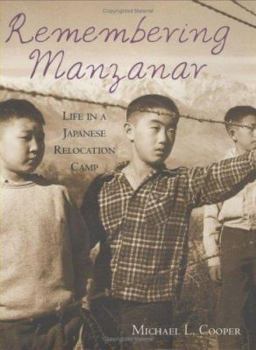Remembering Manzanar: Life in a Japanese Relocation Camp
In this close look at the first relocation camp built for Japanese evacuees living on the West Coast after the bombing of Pearl Harbor, social historian Michael Cooper makes extensive use of the actual words--from diaries, journals, memoirs, and news accounts--of the people who were held behind barbed wire in the high California desert. Many were American citizens who felt betrayed by their country. They had to leave their jobs, their homes, and their friends and go live in crowdedbarracks, eat in noisy mess halls, and do without supplies or books for work or schooling. They showed remarkable bravery and resilience as they tried to lead normal lives, starting their own schools, playing baseball, attending Saturday night dances, and publishing their own newspaper. Archival photographs, some by Ansel Adams and Dorothea Lange, augment the informative text. Manzanar is now a National Historic Site and hosts an annual pilgrimage that is attended by former internees, their families, and friends. Endnotes, Internet resources, index.
Format:Hardcover
Language:English
ISBN:0618067787
ISBN13:9780618067787
Release Date:November 2002
Publisher:Clarion Books
Length:96 Pages
Weight:0.92 lbs.
Dimensions:0.5" x 7.4" x 9.3"
Age Range:10 to 12 years
Grade Range:Grades 5 to 7
Customer Reviews
1 rating
Great!!!
Published by Thriftbooks.com User , 22 years ago
I recently began a paper dealing with a civil rights topic. While researching, I became interested in the Japanese internment of the 1940's. Although much can be learned about the internment from articles and other books, the pictures in this book are "worth 1,000 words." They photographs give a clear understanding of what life in the camps must have been like. I highly reccomend this book to history buffs, photography buffs, and those interested in civil rights issues.Enjoy





